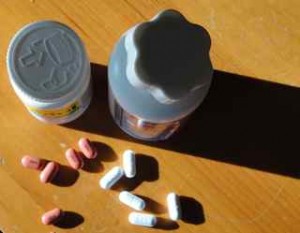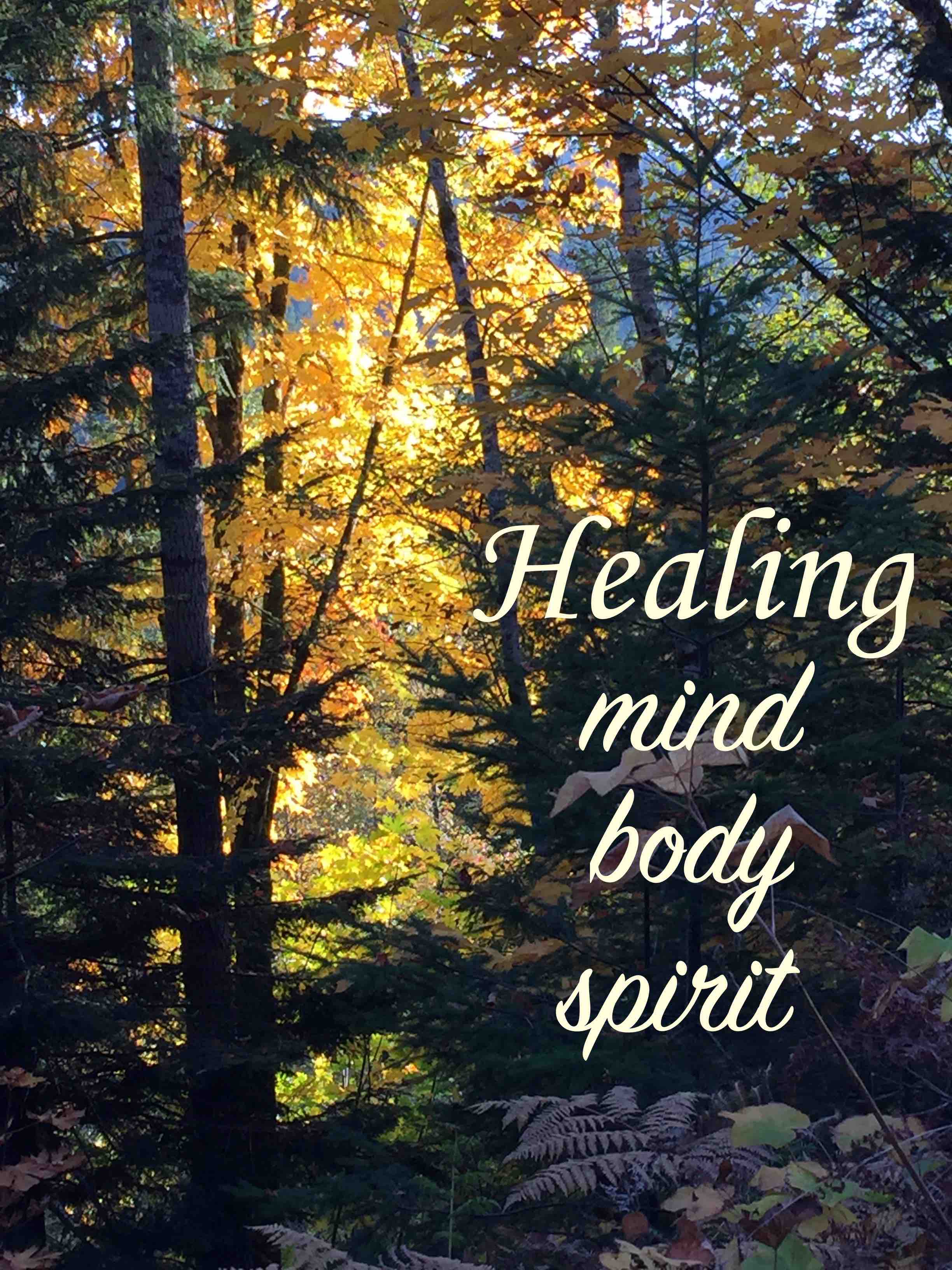
Injury or ill health produces pain. But pain is not the enemy; it is not a bad thing unless we ignore it. Today, I encouraged my husband to go and see the physiotherapist. Being the typical male he was planning to stoically “wait and see” and ignore his painful arm as much as possible. Yet, in seeking help from a skilled professional, he was given some helpful treatment, good instruction about the nature of the problem, and sound advice as to what he needs to do to remedy his “tennis elbow.”
Pain is our early warning system. Whether it is physical pain, mental anguish, or the emotional pain of anger, fear, doubt, or remorse. Pain has a purpose to alert us to the reality that all is not well. Yet in the age of the “quick fix” many view pain as the enemy that they try to eliminate at all costs. The initial folly in this “kill the pain” approach is that we are only treating the effect, the pain. The cause has not been unearthed and the problem is still there, but the person taking the painkiller is now no longer aware of it’s existence. Talk about willful blindness.
This ‘hide the problem approach’ to health reminds me of a telling scene in the movie, Matilda, one of my classroom favourites. Matilda’s Dad, the deceitful car salesman, explains how he puts sawdust in the engine to hide the problem…it masks the noise that would draw a potential buyer’s attention to the car’s real deficiencies. The buyer could have been alerted to the need to fix things, but now the reality will not hit home until the car dies totally. This silencing of our body’s early warning system through overuse of painkillers is not a good approach to health problems either.
Another drawback to the quick fix approach to pain is that painkillers can be toxic and have immediate or long-term health consequences. So the folly may be in trading short-term relief for long term illness, or even death. Have you read the recent warnings for that favourite painkiller, acetaminophen, that is readily available in many forms and under many names in your corner pharmacy or grocery store.
Repeatedly taking marginally too much paracetamol (acetaminophen, Tylenol) over time can cause a dangerous overdose that is hard to detect and can lead to death, because patients usually don’t report an overdose when they visit the hospital, rather that they feel unwell. Clinicians need to be able to detect these cases rapidly so that they can provide prompt and effective treatment, as these patients are in greater danger compared with those who have taken a single overdose. http://www.medicalnewstoday.com/articles/238220.php 24 Nov. 2011
Note that the greater danger is not a single massive overdose, but a little more than warranted over a longer period of time! This is mainstream news, and the dangers are real, but how many doctors warn their patients, and how many people self-medicate without any knowledge of the potential dangers, dangers that have been documented for at least 2 decades. I think most people use this solution to their pain or their children’s pain because they think it is safe…but that is not the reality.
Found in more than 100 OTC (over-the-counter) preparations, including Sudafed®, Theraflu®, and Tylenol®, acetaminophen is used to reduce pain and fever. It has been available in the United States since 1960. Unlike NSAIDs, acetaminophen does not reduce inflammation or blood clotting or cause gastric complications (Roberts LJ et al 2001).
Nevertheless, acetaminophen overdose is one the most common causes of OTC drug poisoning in the United States and Britain. More than 30,000 cases per year of acetaminophen overdose are reported to the American Association of Poison Control Centers (Bartlett D 2004). It is a leading cause of liver failure in the Western world and the leading cause of drug-induced liver failure in the United States (Bartlett D 2004).
People who have liver disorders or who consume large amounts of alcohol are advised to avoid acetaminophen, which can damage both the kidneys and the liver, even at therapeutic doses (Bromer MQ et al 2003). People who use acetaminophen on a regular basis double their risk of kidney cancer (Kaye JA et al 2001; Gago-Dominguez M et al 1999; Derby LE et al 1996). http://www.lef.org/protocols/appendix/otc_toxicity_01.htm 2012
Another consideration in taking the ubiquitous pain relievers is that, like any chemical crutch, there is an addictive quality whether chemically or psychologically. If used extensively, life may seem to be unbearable without them, and often more and more is needed over time to conquer the pain. I do not enjoy pain and there have been times that I have cried out to God to stop the pain, give me relief, or help me bear with it. I remember vividly 3 terrible days of intense pain with a frozen shoulder. The pain was searing, unremitting, excruciating, and for the sake of sleep I would have opted for pain killers, except they did not work and only added nausea to my other symptoms. My physiotherapist said that in her experience this condition brings everyone to tears; the pain is so intense. But as with most pain, with rest, nutritional support, some appropriate physical therapy, and time this wonderful self-healing body that God has given us will mend and the pain will subside.
 Pain relief in childbirth has also become the norm, but there is a cost both to mother and child. I have experience delivering four healthy boys…not without pain, but without the help of pain relieving drugs. But I did have some pain relief, in the form of an encouraging husband-coach, deep breathing exercises, midwife’s advice and pain relief techniques. With most pain there are many non-toxic ways to deal with the pain and not block the body’s natural mechanisms. A quick search on the web yields a host of “alternative” pain relief approaches, but as always “buyer beware” is a good maxim to follow, and always ask yourself, “Is this something that is scripturally sound.” In dealing with the pain of fibromyalgia I have found some strategies that ease the pain, while I search for a full solution: herbal anti-inflammatories and muscle relaxants, massage, light therapy, physiotherapy, cranial-sacral manipulation, chiropractic, exercise, tai chi…to name a few things. But getting that “multitude of counsel” from seasoned health practitioners is probably better than the hit-and-miss approach of random web searches.
Pain relief in childbirth has also become the norm, but there is a cost both to mother and child. I have experience delivering four healthy boys…not without pain, but without the help of pain relieving drugs. But I did have some pain relief, in the form of an encouraging husband-coach, deep breathing exercises, midwife’s advice and pain relief techniques. With most pain there are many non-toxic ways to deal with the pain and not block the body’s natural mechanisms. A quick search on the web yields a host of “alternative” pain relief approaches, but as always “buyer beware” is a good maxim to follow, and always ask yourself, “Is this something that is scripturally sound.” In dealing with the pain of fibromyalgia I have found some strategies that ease the pain, while I search for a full solution: herbal anti-inflammatories and muscle relaxants, massage, light therapy, physiotherapy, cranial-sacral manipulation, chiropractic, exercise, tai chi…to name a few things. But getting that “multitude of counsel” from seasoned health practitioners is probably better than the hit-and-miss approach of random web searches.
King David, wrote of the pain of illness that he attributed to some sin he had committed. In this case downing a dose of the latest pain medication may have perhaps eased the physical pain of the wounds or sores, but not dealt with the underlying problem that was spiritual in nature. David was experiencing the pain of separation from God, and his need was for forgiveness and God’s direct intervention to bring about spiritual and emotional healing.
O LORD, don’t rebuke me in your anger or discipline me in your rage! …my health is broken because of my sins. My guilt overwhelms me—it is a burden too heavy to bear. My wounds fester and stink because of my foolish sins. I am bent over and racked with pain. All day long I walk around filled with grief. A raging fever burns within me, and my health is broken. I am exhausted and completely crushed. My groans come from an anguished heart.
You know what I long for, Lord; you hear my every sigh… I am on the verge of collapse, facing constant pain. But I confess my sins; I am deeply sorry for what I have done. Do not abandon me, O LORD. Do not stand at a distance, my God. Come quickly to help me, O Lord my savior. Psalm 38
It is important to know the source, the cause of our pain, and work to provide a solution that doesn’t merely mask symptoms but roots out the core of the problem whether physical, emotional, or spiritual.
 A focus on pain-free living sidetracks us into a dead end and keeps us from walking the road to recovery – making the changes we need to make to overcome our health problems. Pain can be debilitating and discouraging, but it can also motivate us to do our research and discern and deal with the real causes of our misery. God has a purpose for pain that alerts us to the need to care for our bodies and change our behaviour. If we fall off a ladder and break a leg, the cause and effect relationship is amply clear. But many people no longer “listen” to their bodies or their hearts so their pain seems unrelated to their daily living. It takes some soul-searching, like David’s, to see how our pain relates to our thoughts and actions.
A focus on pain-free living sidetracks us into a dead end and keeps us from walking the road to recovery – making the changes we need to make to overcome our health problems. Pain can be debilitating and discouraging, but it can also motivate us to do our research and discern and deal with the real causes of our misery. God has a purpose for pain that alerts us to the need to care for our bodies and change our behaviour. If we fall off a ladder and break a leg, the cause and effect relationship is amply clear. But many people no longer “listen” to their bodies or their hearts so their pain seems unrelated to their daily living. It takes some soul-searching, like David’s, to see how our pain relates to our thoughts and actions.
Many people have stopped asking themselves, for example, whether their gastric pain is related to diet, or emotions, or some other cause. The tendency for many of us is to just grab the pain relief, “plop, plop, fizz, fizz,” and continue on with our activities. Then after years of ignoring the symptoms and erasing the pain we wonder why we are forced to cope with major breakdowns in our digestive system. Or as work warriors, perhaps we anesthetize the headache and chills and “give our cold” to the over-the-counter pain relief that pleases our palate. Instead of getting the rest and cleansing our body needs, we short-circuit the healing processes and infect everyone else around us in our workplace when we should have followed God’s quarantine advice and rested at home.
I am quite confident that God is not impressed with our modern pain relief in-a-bottle strategy that blinds us to the need to change our behaviour, allows acute conditions to develop into chronic problems, and keeps us from reaching out to God for help. We need to all ask ourselves whether we are dealing with our pain honestly, in a way that would please our Creator. Let’s let pain prompt us to change.
Disclaimer: The entire contents of this health blog are based upon the opinions of Rebecca Stewart, unless otherwise noted. Individual articles are based upon the opinions of the respective author, who retains copyright. The information on this blog is not intended to replace a one-on-one relationship with a qualified health care professional and is not intended as medical advice. It is intended as a sharing of knowledge and information from the research and experience of Rebecca Stewart. She encourages you to make your own health care decisions based upon your research and in partnership with a qualified health care professional.









